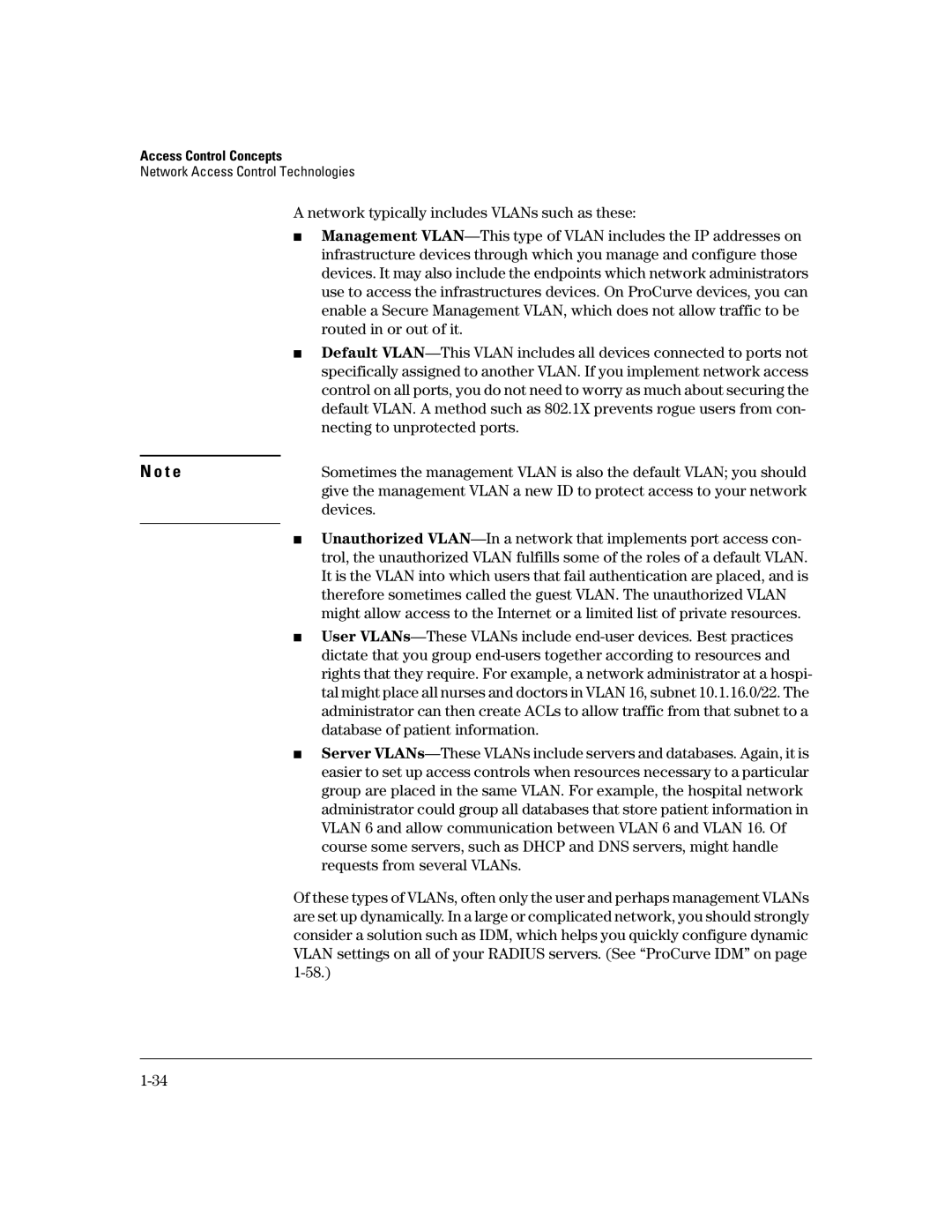
Access Control Concepts
Network Access Control Technologies
A network typically includes VLANs such as these:
■Management
■Default
N o t e | Sometimes the management VLAN is also the default VLAN; you should |
| give the management VLAN a new ID to protect access to your network |
| devices. |
|
|
■Unauthorized
■User
■Server
Of these types of VLANs, often only the user and perhaps management VLANs are set up dynamically. In a large or complicated network, you should strongly consider a solution such as IDM, which helps you quickly configure dynamic VLAN settings on all of your RADIUS servers. (See “ProCurve IDM” on page
